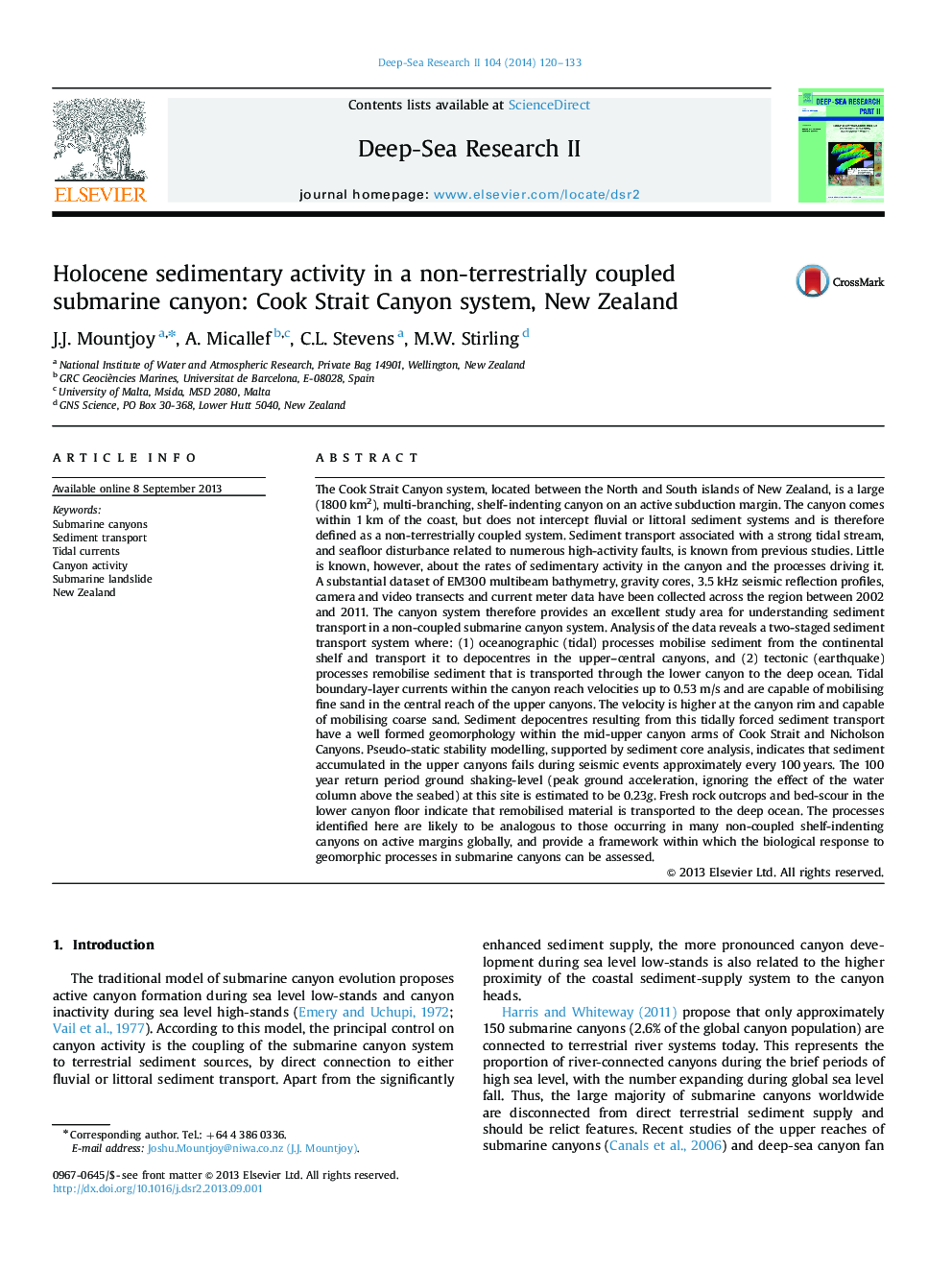| کد مقاله | کد نشریه | سال انتشار | مقاله انگلیسی | نسخه تمام متن |
|---|---|---|---|---|
| 4536390 | 1626436 | 2014 | 14 صفحه PDF | دانلود رایگان |
The Cook Strait Canyon system, located between the North and South islands of New Zealand, is a large (1800 km2), multi-branching, shelf-indenting canyon on an active subduction margin. The canyon comes within 1 km of the coast, but does not intercept fluvial or littoral sediment systems and is therefore defined as a non-terrestrially coupled system. Sediment transport associated with a strong tidal stream, and seafloor disturbance related to numerous high-activity faults, is known from previous studies. Little is known, however, about the rates of sedimentary activity in the canyon and the processes driving it. A substantial dataset of EM300 multibeam bathymetry, gravity cores, 3.5 kHz seismic reflection profiles, camera and video transects and current meter data have been collected across the region between 2002 and 2011. The canyon system therefore provides an excellent study area for understanding sediment transport in a non-coupled submarine canyon system. Analysis of the data reveals a two-staged sediment transport system where: (1) oceanographic (tidal) processes mobilise sediment from the continental shelf and transport it to depocentres in the upper–central canyons, and (2) tectonic (earthquake) processes remobilise sediment that is transported through the lower canyon to the deep ocean. Tidal boundary-layer currents within the canyon reach velocities up to 0.53 m/s and are capable of mobilising fine sand in the central reach of the upper canyons. The velocity is higher at the canyon rim and capable of mobilising coarse sand. Sediment depocentres resulting from this tidally forced sediment transport have a well formed geomorphology within the mid-upper canyon arms of Cook Strait and Nicholson Canyons. Pseudo-static stability modelling, supported by sediment core analysis, indicates that sediment accumulated in the upper canyons fails during seismic events approximately every 100 years. The 100 year return period ground shaking-level (peak ground acceleration, ignoring the effect of the water column above the seabed) at this site is estimated to be 0.23g. Fresh rock outcrops and bed-scour in the lower canyon floor indicate that remobilised material is transported to the deep ocean. The processes identified here are likely to be analogous to those occurring in many non-coupled shelf-indenting canyons on active margins globally, and provide a framework within which the biological response to geomorphic processes in submarine canyons can be assessed.
Journal: Deep Sea Research Part II: Topical Studies in Oceanography - Volume 104, June 2014, Pages 120–133
